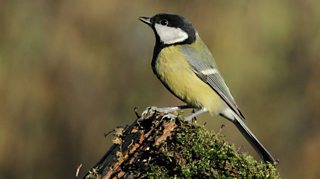In the 1980s, the world was introduced to the 'small fat bird'. The small fat bird represents the millions of garden birds that spend their winters in Britain.
Like most birds, this one slept at night and ate during the day. Yet each time it appeared, typically during the winter, this bird faced new challenges. In some cases, patches varied in whether they contained food or not, or at other times they varied in how difficult each food item was to handle.

Great tit by Andrew Collins
A further challenge that this bird faced was the threat of a skilled predator, forcing it to remain leaner and more agile, but at an increased cost of starving during the long winter nights. Luckily, this bird had an ally: evolution had provided it with the innate ability to make accurate decisions when faced with two unequal options. This bird had evolved an optimal strategy.
Although this small fat bird represented millions of common garden birds faced with surviving harsh winter conditions, it was - and remains - 聽a modelling abstraction of theoretical biology. Its living counterparts, those that survive and breed year-in, year-out, face a much wider range of challenges: where to find food, how to out-compete others for limited resources, or even how to form alliances in order to ensure they can keep warm enough to survive cold nights.
Further, their challenges rarely occur in isolation, but then neither are they alone in having to do so. The presence of others can provide a range of benefits, such as providing information about the environment or increasing their chance of escaping attacking predators.
Amazingly, groups of birds can solve complex problems by combining their individual abilities. However, in order to achieve all of this, these birds require robust rules, ones that will succeed many more times than they will fail.聽
Understanding the decisions that the small fat bird made has helped to uncover how animals survive in their physical environment. However, the rules that govern how individuals interact, and the feedback of environmental conditions, still remain largely unknown.
In my research, I explore the social structure of wintering groups of birds and the rules maintaining these. In doing so, I provide a small window for understanding the role that social behaviour plays in evolution, as seen through the decisions of small fat birds.
